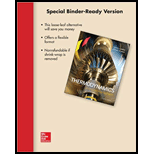
a)
The exit velocity of the nozzle.
a)
Answer to Problem 75P
The exit velocity of the nozzle is
Explanation of Solution
Write the energy balance equation for closed system.
Here, rate of energy transfer into the system is
Substitute
Here, inlet velocity is
Write the change in entropy equation
Here, universal gas constant is
Write the change in enthalpy equation per mole basis.
Here, Ideal enthalpy at final state is
Write the change in enthalpy equation in mass basis.
Here, molar mass is
Conclusion:
Refer table A-19E, “Ideal properties of oxygen”, obtain the enthalpy of inlet and entropy at initial temperature of
Substitute
Refer table A-19E, “Ideal properties of oxygen”, obtain the enthalpy of inlet and final temperature at final entropy of
Substitute
Substitute
Substitute
Thus, the exit velocity of the nozzle is
b)
The exit velocity of the nozzle.
b)
Answer to Problem 75P
The exit velocity of the nozzle is
Explanation of Solution
Calculate the reduced temperature
Here, critical temperature is
Calculate the reduced pressure
Here, critical pressure is
Calculate the reduced temperature
Here, critical temperature is
Calculate the reduced pressure
Here, critical pressure is
Calculate the change in enthalpy
Here, change in enthalpy of ideal gas is
Conclusion:
Refer table A-1E, “Molar mass, gas constant and critical properties table”, obtain the molar mass, critical temperature, critical pressure, and gas constant of oxygen as
Substitute 1060 R for
Substitute
Refer the table A-15E, “Nelson-Obert generalized compressibility chart”, select the compressibility factor
Substitute 802 R for
Substitute
Refer the table A-15E, “Nelson-Obert generalized compressibility chart”, select the compressibility factor
Substitute
Here, specific heat at constant pressure is
Substitute
Substitute
Thus, the exit velocity of the nozzle is
Want to see more full solutions like this?
Chapter 12 Solutions
Thermodynamics: An Engineering Approach - With Access (Looseleaf)
 Elements Of ElectromagneticsMechanical EngineeringISBN:9780190698614Author:Sadiku, Matthew N. O.Publisher:Oxford University Press
Elements Of ElectromagneticsMechanical EngineeringISBN:9780190698614Author:Sadiku, Matthew N. O.Publisher:Oxford University Press Mechanics of Materials (10th Edition)Mechanical EngineeringISBN:9780134319650Author:Russell C. HibbelerPublisher:PEARSON
Mechanics of Materials (10th Edition)Mechanical EngineeringISBN:9780134319650Author:Russell C. HibbelerPublisher:PEARSON Thermodynamics: An Engineering ApproachMechanical EngineeringISBN:9781259822674Author:Yunus A. Cengel Dr., Michael A. BolesPublisher:McGraw-Hill Education
Thermodynamics: An Engineering ApproachMechanical EngineeringISBN:9781259822674Author:Yunus A. Cengel Dr., Michael A. BolesPublisher:McGraw-Hill Education Control Systems EngineeringMechanical EngineeringISBN:9781118170519Author:Norman S. NisePublisher:WILEY
Control Systems EngineeringMechanical EngineeringISBN:9781118170519Author:Norman S. NisePublisher:WILEY Mechanics of Materials (MindTap Course List)Mechanical EngineeringISBN:9781337093347Author:Barry J. Goodno, James M. GerePublisher:Cengage Learning
Mechanics of Materials (MindTap Course List)Mechanical EngineeringISBN:9781337093347Author:Barry J. Goodno, James M. GerePublisher:Cengage Learning Engineering Mechanics: StaticsMechanical EngineeringISBN:9781118807330Author:James L. Meriam, L. G. Kraige, J. N. BoltonPublisher:WILEY
Engineering Mechanics: StaticsMechanical EngineeringISBN:9781118807330Author:James L. Meriam, L. G. Kraige, J. N. BoltonPublisher:WILEY





